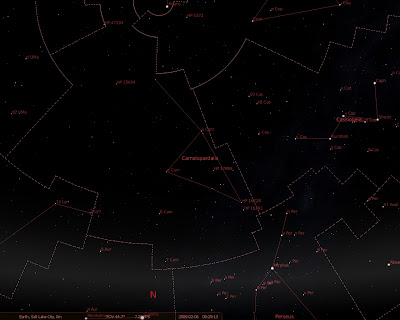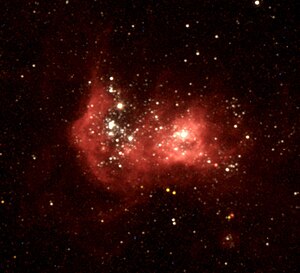
FINALLY....Proof of alien contact. I can't believe it! All those people who have been testifying for decades of alien encounters and we all laughed, or at least scoffed. Well, here it is, the evidence has been leaked. I wonder if they (the gov't) will finally admit that bodies were recovered from Roswell, NM.
Having an open mind in life is my mantra. I don't believe that we can possibly be the only ones in this universe. The Drake Equation is kind of a way to look at things in a greater scale.
N=R (x) fp (x) ne (x) fℓ (x) fi (x) fc (x) L
N is the number of civilizations in our galaxy with which communication might be possible;
and
R is the average rate of star formation in our galaxy.
fp is the fraction of those stars that have planets.
ne is the average number of planets that can potentially support life per star that has planets.
fℓ is the fraction of the above that actually go on to develop life at some point.
fi is the fraction of the above that actually go on to develop intelligent life.
fc is the fraction of civilizations that develop a technology that releases detectable signs of their existence into space.
L is the length of time such civilizations release detectable signals into space.
Current estimates of the parameters
This section attempts to list best current estimates for the parameters of the Drake equation.
R = the rate of star creation in our galaxy
Estimated by Drake as 10/year. Latest calculations from NASA and the European Space Agency indicates that the current rate of star formation in our galaxy is about 7 per year.
fp = the fraction of those stars which have planets
Estimated by Drake as 0.5. It is now known from modern planet searches that at least 30% of sun-like stars have planets, and the true proportion may be much higher, since only planets considerably larger than Earth can be detected with current technology. Infra-red surveys of dust discs around young stars imply that 20-60% of sun-like stars may form terrestrial planets.
ne = the average number of planets (satellites may perhaps sometimes be just as good candidates) which can potentially support life per star that has planets. Estimated by Drake as 2. Marcy, et al. notes that most of the observed planets have very eccentric orbits, or orbit very close to the sun where the temperature is too high for earth-like life. However, several planetary systems that look more solar-system-like are known. These may well have smaller, as yet unseen, earth sized planets in their habitable zones. Also, the variety of solar systems that might have habitable zones is not just limited to solar-type stars and earth-sized planets - it is now believed that even tidally locked planets close to red dwarves might have habitable zones, and some of the large planets detected so far could potentially support life. Since about 200 planetary systems are known, this implies ne > 0.005. Lineweaver has also determined that about 10% of star systems in the Galaxy are hospitable to life, by having heavy elements, being far from supernovae and being stable themselves for sufficient time.
Even if planets are in the habitable zone, however, the number of planets with the right proportion of elements may be difficult to estimate. Also, the Rare Earth hypothesis, which posits that conditions for intelligent life are quite rare, has advanced a set of arguments based on the Drake equation that the number of planets or satellites that could support life is small, and quite possibly limited to Earth alone; in this case, the estimate of ne would be infinitesimal.
fl = the fraction of the above which actually go on to develop life.
Estimated by Drake as 1.
In 2002, Charles H. Lineweaver and Tamara M. Davis (at the University of New South Wales and the Australian Centre for Astrobiology) estimated fl as > 0.13 on planets that have existed for at least one billion years using a statistical argument based on the length of time life took to evolve on Earth.
fi = the fraction of the above which actually go on to develop intelligent life.
Estimated by Drake as 0.01.
fc = the fraction of the above which are willing and able to communicate.
Estimated by Drake as 0.01.
L = the expected lifetime of such a civilization for the period that it can communicate across interstellar space.
Estimated by Drake as 10,000 years. David Grinspoon has argued that once a civilization has developed it might overcome all threats to its survival. It will then last for an indefinite period of time, making the value for L potentially billions of years. If this is the case, then the galaxy has been steadily accumulating advanced civilizations since it formed.
Values based on the above estimates,
R = 7/year, fp = 0.5, ne = 2, fl = 0.33, fi = 0.01, fc = 0.01, and L = 10000 years
result in
N = 7 × 0.5 × 2 × 0.33 × 0.01 × 0.01 × 10000 = 2.31
According to the figure above there are 2.31 potential alien species ready to communicate in our galaxy. Earth is one planet and that leaves 1.31 other civilizations left in our galaxy. Not a very impressive number. Lets look at one more number;
The total number of galaxies in the observable universe = more than 100 billion
If you take the estimate of 2.31 civilizations per galaxy and multiplied that by just the observable number of galaxies you end up with 2,310,000,000 civilizations we could potentially communicate with. I don't think we are alone.
If you have made it this far, sorry if there is too much info for one entry but I wanted to give a rough outlook astronomers have for alien life out there. Unfortunately, the image is NOT of an alien spacecraft but it is the heat shield of the Orion crew module, upside-down for inspection.
Thank you for reading....









